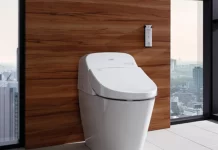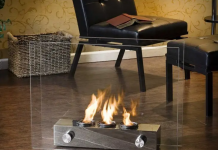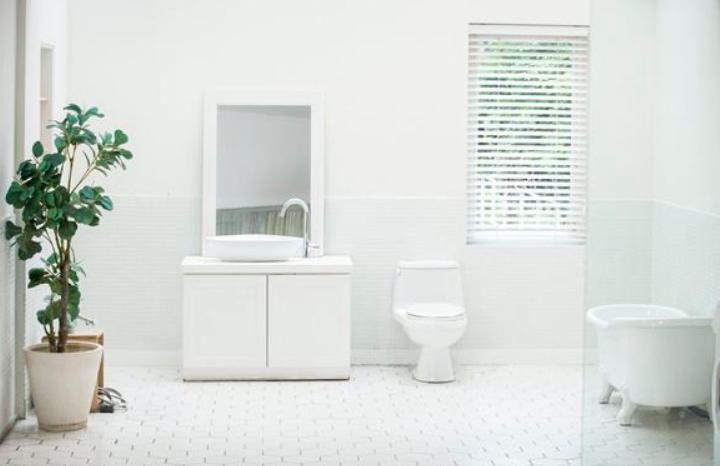A bathroom fan is a device that blows air outside through flexible tubing or metal ducts. Fans improve air quality by removing moisture and odors from the bathroom and other damp areas. Installing a fan is a good idea, and many building codes require it in new construction or major bathroom renovations. Building codes require the installation of a fan and may have specific recommendations for fan size, measured in cubic feet per minute (CFPM), depending on the size of the room.
But not all communities have these building code requirements, so check your area. For example, some areas may not require a fan in bathrooms with windows that open. Although not required, a fan would be a nice addition to any bathroom.
What are bathroom exhaust fans for

Many people think that an exhaust fan is responsible for the primary function of removing odors from the bathroom, but in fact, the more important function is to release warm, moist air from the tub or shower. Warm, humid air not only promotes mold growth, but it can also damage bathroom fixtures and surfaces in the bathroom. If your bathroom doesn’t have a fan and smells musty, be sure to install one, making sure you don’t already have serious mold.
Without an exhaust fan, moist air can damage plumbing fixtures as well as bathroom walls, floors and ceilings due to excessive moisture buildup. The warm, humid air from hot tubs and showers is the perfect environment for mold, fungus and germs to grow. High indoor humidity can lead to peeling of entry doors as well as interior materials such as wall panels, wall paint and trim. Provide ventilation for a safe and healthy bathroom.
How an exhaust fan works

The exhaust fan connects to a standard household electrical circuit, such as a 120 volt ceiling light. A wall switch turns the exhaust fan on and off, and the fan may also have a timer to run for a certain amount of time. When the fan is on, air is drawn from the bathroom through the fan housing into a hose or duct that leads to a vent on the roof or side wall of the house.
A louvered cover protects the vent by shutting it off when it is not in use. This vent cover is cut into the wall or roof and fastened to the outside with 4 screws and a small silicone gasket or covered by the roof.
Consider an important aspect
Many people choose bathroom fans in a variety of styles and colors, which can be either standalone models that include only fans, lights or heating lamps, or combined models that include fans. Now there are advanced models with built-in Bluetooth features and speakers that allow you to stream music wirelessly from your smartphone, tablet or home media system.
When buying a fan, pay attention to the noise level. It may seem like a small thing, but a loud fan can be annoying when you’re trying to relax after bathing in the tub. A noise level of 1.0 dB or less is your best choice.
One of the most important things is to make sure that the fan is operating at a capacity that matches the size of your room. Fan performance is measured in cubic feet per minute (cfm) – the amount of air flowing through the unit. Generally, the higher the capacity, the higher the output, but the fan may be too powerful for your room and create negative pressure in your bathroom. This can interfere with ductwork or draw in cold air through windows, so it’s important to choose a fan that’s the right size for your bathroom.
HVI – Home Ventilation Certification
Fans certified by the Home Ventilation Institute (HVI) are independently tested and certified to certain industry standards. HVI certified fans, selected and properly installed according to sizing recommendations, are guaranteed to perform as promised.

Installation Tips :
- It is best to install the fan in the location with the most humidity, namely over the sink or near the shower. In an open bathroom, the fan can be installed in the middle between the shower/bathtub and the toilet. In a very small bathroom, it is better to place the fan indoors. If the toilet is in an auxiliary room with a door, it is recommended to install a second exhaust fan for that area.
- When the fan is not in use, make sure that the outside vents work properly so that they do not close completely. This will prevent cold air from flowing back into the house when the exhaust fan is not running.
- Insulate the hoses or ducts from the fan housing to the outdoor louver covers. This will reduce heat loss from the room to the outside.
- Do not caulk the gap under the bathroom door tightly. Leave a 3/4 inch gap for air to escape from the fan.
- If your bathroom ceiling is more than 9 feet high, you will definitely need a higher capacity exhaust fan.
A bathroom fan is a rather useful technology for the bathroom. It removes excess moisture from the room, thus preventing the formation of condensation, especially in winter.






